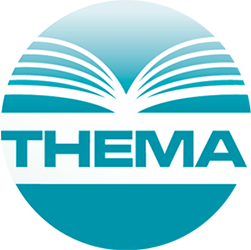The strict regulatory requirements of MDR (EU) 2017/745 are about to hit hard a particular category of economic operators: the medical device Own Brand Label (OBL) manufacturers.
Own Brand Labelling (OBL) is a marketing route where a manufacturer sells under their own brand an already CE-marked medical device, which they have purchased from the original manufacturer. The (legal) manufacturer who sells under their own brand is called Own Brand Labeler (OBL) or Virtual Manufacturer, while the latter is called Original Equipment Manufacturer (OEM).
The relationship between the OEM and the OBL
The regulatory responsibilities of each party are defined through a contract also known as OBL agreement, a specific Quality Technical Agreement (QTA). The OEM assumes full responsibility for the design, manufacturing, and packaging (and original conformity assessment) of the medical device, but gets to keep their proprietary information and trade secrets.

To issue the OBL a new CE certificate, Notified Bodies used to accept the original/existing CE certificate of the OEM and an abbreviated Technical File, also called Summary Technical Documentation (STED). The STED intentionally left out the OEM’s proprietary information, such as manufacturing know-how and clinical evaluation data.
The OBL’s role in this sales model was to leverage their network of distribution partners to ensure the device would reach the desired markets.
European regulatory changes
In 2013, the “Commission Recommendation 2013/473/EU on the audits and assessments performed by notified bodies in the field of Medical Devices ” clarifies the new position of the Notified Bodies towards private label devices that were outsourced to critical subcontractors or crucial suppliers.
The OBL’s earlier approach was no longer valid because they “did not fulfill their obligation to have at their disposal the full technical documentation and/or of a quality system by referring to the technical documentation of a subcontractor or supplier and/or to their quality system ”.
OBLs and OEMs were caught off-guard. The STED, previously accepted by Notified Bodies during audits, was no longer enough. More and more Notified Bodies followed the European Commission’s recommendation to the letter.
In 2017 came the “Virtual manufacturing of Medical Devices ” guidance issued by the UK’s Medicines & Healthcare products Regulatory Agency, which clarified their standpoint on OBL manufacturing, quote: “where a manufacturer has designed the product and subcontracts the manufacturing and other associated processes, he remains the manufacturer ”.

Even though the OBL manufacturer does not design the product, but has an agreement to supply a medical device under their own brand that has been designed by another manufacturer, they are considered the (legal) manufacturer because they are placing their own name on the medical device. Consequently, they are required to hold the full technical documentation for any product they place on the market under their name.
Last but definitely not least, MDR (EU) 2017/745 reinforces MHRA’s point of view on the topic. A manufacturer is “a natural or legal person who manufactures or fully refurbishes a device or has a device designed, manufactured or fully refurbished, and markets that device under its name or trademark ”. Their obligations, set forth under Article 10(4) General Obligations of manufacturers, apply to the OBL manufacturer as well.
Effective May 25, 2020, when MDR (EU) 2017/745 becomes fully active, continuing business as usual is no longer an option. The OBL is expected to find and appoint a suitable Person Responsible for Regulatory Compliance (PRRC), appoint an EU REP (if the they are located outside EU), track complaints, perform field actions, fill the PMS, assign and register the UDI for the Medical Devices they intend to market.
The identity of their OEM can no longer be kept secret, but no authority can constrain the OEM to hand over their full Technical File. The big question is: can the OBL still afford to remain in the game, now that the rules have changed?

Otilia Maya Tanase, PhD
Regulatory Affairs & Marketing Specialist
Stay tuned for an in-depth analysis of the OBL-OEM relationship and the changes they have to face under MDR (UE) 2017/745 in our upcoming white paper.
Thema Srl is passionately dedicated to saving lives and preserving the health of men, women, children and animals. Our substantial expertise allows us to be the companies ideal partner for the training of professionals in the sector, ensuring their time and resources optimization.
Have you already downloaded the Post Market Surveillance process Infographic?
Download our Unique Device Identification (UDI) and traceability for medical software article, written by THEMA in collaboration with Quipu S.r.l and published in the Journal of Biomedical Informatics.





